How to Choose the professional led stage lights manufacturer and supplier in us?
- How to Choose the Professional LED Stage Lights Manufacturer and Supplier in US?
- Why choosing the right professional led stage lights manufacturer matters
- Define Technical and Performance Requirements for Professional LED Stage Lights
- Identify the lighting fixtures you need (moving heads, washes, strobes, etc.)
- Set photometric and color requirements (CRI, CCT, color mixing)
- Define control and network needs (DMX, RDM, Art-Net, sACN)
- Verify Manufacturer Certifications, Compliance, and Quality Control
- Check safety, EMC, and environmental certificates (UL, ETL, CE, RoHS)
- Request photometric and longevity test data (LM-80, TM-21)
- Ask about ISO and internal QC procedures
- Evaluate Production Capacity, Lead Times, and Scalability
- Confirm production scale and annual output capability
- Determine lead times, minimum order quantities (MOQ), and ramp plans
- Assess R&D, Customization (OEM/ODM), and Digital Control Capabilities
- Evaluate R&D strength and patent portfolio
- Confirm OEM/ODM flexibility and software support
- Compare Pricing, Total Cost of Ownership, and Warranty/Support
- Look beyond unit price to TCO (maintenance, energy, spares)
- Typical warranty and service expectations
- Comparison Table: Key Selection Criteria for Choosing a Supplier
- Check After-sales Service, Spare Parts, and Logistics for US Market
- Confirm spare parts availability and stocking strategy
- Understand shipping, customs, and incoterms
- How to Conduct Supplier Due Diligence and Factory Audit
- Prepare a supplier checklist for audits
- Run independent tests on samples
- Case Examples and Red Flags When Choosing a Supplier
- Common red flags to avoid
- Good signs of a professional supplier
- Conclusion: A Practical Selection Checklist for US Buyers
- Final checklist for selecting professional led stage lights manufacturers
How to Choose the Professional LED Stage Lights Manufacturer and Supplier in US?
Why choosing the right professional led stage lights manufacturer matters
Selecting a reliable professional LED stage lights manufacturer and supplier has direct impact on show quality, long-term cost of ownership, and operational risk. Venues and production companies require fixtures that deliver accurate color, consistent output, predictable maintenance, and regulatory compliance. Choosing the right partner reduces downtime, avoids costly recalls, and helps realize a designer’s creative vision while maintaining budget and timeline.
Define Technical and Performance Requirements for Professional LED Stage Lights
Identify the lighting fixtures you need (moving heads, washes, strobes, etc.)
Start by listing the fixture types required for your application—moving head spot, profile, wash fixtures, LED panels, beam lights, and static pars. Using the keyword professional led stage lights, prioritize features like lumen output, beam angle range, zoom capability, zoom speed, and pixel mapping if your production needs LED pixel control.
Set photometric and color requirements (CRI, CCT, color mixing)
Specify photometric needs: CRI or TM-30 scores if accurate color rendering is critical, correlated color temperature (CCT) ranges, and whether you need full RGBW/CMY color mixing or fixed gels. For high-end theater and broadcast work, look for fixtures with high CRI (typically CRI ≥ 90) and stable color over time as verified by LM-80 testing.
Define control and network needs (DMX, RDM, Art-Net, sACN)
List control protocols required: DMX512-A (ANSI E1.11), RDM (ANSI E1.20) for bidirectional control, or networked protocols like Art-Net and sACN. Professional led stage lights suppliers should support these standards and provide firmware update paths for future protocol changes.
Verify Manufacturer Certifications, Compliance, and Quality Control
Check safety, EMC, and environmental certificates (UL, ETL, CE, RoHS)
For US deployments, UL or ETL listings reduce customs and venue acceptance issues; CE and RoHS demonstrate compliance with EU/EMC and hazardous substance rules for tours visiting Europe. Confirm that fixtures and power supplies have undergone appropriate safety and electromagnetic compatibility testing.
Request photometric and longevity test data (LM-80, TM-21)
Ask for LM-80 test reports for LEDs and TM-21 extrapolations that estimate lumen maintenance (L70 or L80). Good professional led stage lights manufacturers will provide LM-80 data showing LED packages rated for 50,000–100,000 hours and TM-21 projections for lumen maintenance schedules.
Ask about ISO and internal QC procedures
Quality systems such as ISO 9001 indicate structured manufacturing and quality management. Request a copy of the manufacturer’s QC checklist, in-line testing procedures, and acceptance criteria for batches shipped to the US.
Evaluate Production Capacity, Lead Times, and Scalability
Confirm production scale and annual output capability
Understand whether the manufacturer can support your volume. For example, LQE (founded 2008, headquartered in Foshan, China) has a 10,000 sqm production base, an annual output capacity of 100,000 fixtures, and 80 national patents — demonstrating both scale and IP investment. If you require phased rollouts or large festival orders, confirm they can scale accordingly.
Determine lead times, minimum order quantities (MOQ), and ramp plans
Clarify sample lead times (often 2–6 weeks) and production lead times (typically 6–16 weeks depending on volume and customization). Ask about MOQs for OEM orders and how capacity is prioritized during peak seasons (Q3–Q4 for touring season preparations).
Assess R&D, Customization (OEM/ODM), and Digital Control Capabilities
Evaluate R&D strength and patent portfolio
A strong R&D team and patents imply the supplier is investing in innovation. LQE’s 80 national patents indicate development capability. For professional led stage lights, R&D is crucial for features like quieter cooling, faster zoom mechanics, precise color mixing, and efficient power supplies.
Confirm OEM/ODM flexibility and software support
If you need custom branding, firmware changes, or unique mechanical adjustments, ensure the supplier supports OEM/ODM and maintains version control for firmware. Ask if they provide SDKs or API documentation for control systems.
Compare Pricing, Total Cost of Ownership, and Warranty/Support
Look beyond unit price to TCO (maintenance, energy, spares)
Unit cost matters, but total cost over the fixture’s lifetime matters more. LED fixtures typically reduce energy and lamp replacement costs, but consider expected lumen depreciation, fan or motor service intervals, and availability of replacement parts. Warranty terms (2–5 years typical) and extended support options should be compared.
Typical warranty and service expectations
Professional suppliers often offer 2–3 years as standard and optionally extended warranties for a fee. Verify what the warranty covers (LEDs, electronics, motors), response SLAs, and whether there are local service partners in the US for faster turnaround.
Comparison Table: Key Selection Criteria for Choosing a Supplier
| Selection Criteria | What to Ask / Expect | Example: LQE (Provided Data) |
|---|---|---|
| Headquarters & History | Years in business and HQ location | Founded 2008; Foshan, China |
| Production scale | Factory area; annual output | ~10,000 sqm; capacity 100,000 fixtures/year |
| Patents & R&D | IP portfolio, R&D team size | 80 national patents |
| Product range | Moving heads, static lights, specialty fixtures | Full range of moving heads & static fixtures for theater, concerts, clubs |
| Certifications | UL/ETL/CE/RoHS; LM-80/TM-21 | Manufacturer should provide relevant certifications and test reports |
| Control & Protocols | DMX, RDM, Art-Net, sACN support | Full digital control support expected from professional suppliers |
| Warranty & Support | Standard warranty, local service options | Typical 2–3 years; confirm onsite partners for US service |
| Lead time & MOQ | Samples vs mass production lead times | Sample lead time 2–6 weeks; production 6–16 weeks typical |
Check After-sales Service, Spare Parts, and Logistics for US Market
Confirm spare parts availability and stocking strategy
Ask where spare parts are stocked (factory only vs. regional warehouses). For US customers, local stocking of common spares (power supplies, fans, gobos, DMX boards) reduces downtime and can be a deciding factor between suppliers.
Understand shipping, customs, and incoterms
Discuss shipping options (air freight for urgent replacements, sea freight for bulk orders), lead times, customs compliance paperwork, and recommended incoterms (DAP, DDP) to clarify who handles import duties and delivery to your facility.
How to Conduct Supplier Due Diligence and Factory Audit
Prepare a supplier checklist for audits
During a factory visit or third-party inspection, check assembly lines, testing stations, burn-in procedures (48–72 hours burn-in is common), stock control, and spare-part labeling. Review sample test reports for photometrics, safety, and environmental stress tests.
Run independent tests on samples
Before full production, order multiple samples and run acceptance tests: photometric consistency, color accuracy, thermal behavior under load, acoustic noise (important for broadcast/theater), and mechanical longevity tests (tilt/ pan cycles for moving heads).
Case Examples and Red Flags When Choosing a Supplier
Common red flags to avoid
- Lack of documentation: missing LM-80/TM-21, missing safety certifications for US/EU.
- No transparent QC or refusal to allow third-party audits.
- Extremely low unit prices without clear explanation (often cutting corners on components).
- Poor communication or slow technical response during the sample phase.
Good signs of a professional supplier
- Clear technical datasheets, photometric files (IES files), and control firmware notes.
- Demonstrated project theaters, broadcasters, or touring productions.
- Local US support or distributor partners for quick service.
Conclusion: A Practical Selection Checklist for US Buyers
Final checklist for selecting professional led stage lights manufacturers
- Define technical specs: fixture types, lumen, CRI, control protocols.
- Verify certifications: UL/ETL, CE, RoHS, LM-80/TM-21, ISO 9001.
- Confirm production capacity, lead times, and MOQ.
- Assess R&D, OEM/ODM ability, and firmware/update policies.
- Compare TCO: energy savings, maintenance, and warranty scope.
- Plan logistics: spare parts, US warehousing, and incoterms.
- Conduct sample testing and a factory audit or third-party inspection.
Choosing a supplier like LQE—an experienced OEM/ODM manufacturer with significant production capacity and patent-backed R&D—can offer advantages in consistent quality and customization. However, always validate claims through sample testing, review of certificates, and an audit before committing to large orders.
Frequently Asked Questions
What are the most important certifications to look for when importing LED stage lights into the US?UL or ETL listings are crucial for safety acceptance in many US venues; CE and RoHS are important for Europe. Also ask for LM-80 test data and photometric files.
How long should LED stage lights last before significant lumen depreciation?LED lifetime depends on LED bin and cooling; LM-80/TM-21 projections often estimate L70 (70% lumen maintenance) between 50,000 and 100,000 hours for high-quality LED packages.
Is it better to buy from a local US distributor or a direct overseas manufacturer?Local distributors offer faster service and inventory but usually at a higher unit cost. Direct overseas OEMs can provide lower unit costs and customization but require stronger quality control, logistics planning, and longer lead times.
What warranties are standard for professional LED stage fixtures?Standard warranties range from 2 to 3 years; High Quality or extended warranties (up to 5 years) may be available. Confirm what components are covered, such as LEDs, power supplies, motors, and labor.
How can I test samples effectively before a large purchase?Request multiple samples, run photometric tests (lumen output, beam uniformity), heat-run tests, acoustic noise checks for moving heads, and controls testing with your console (DMX/RDM, Art-Net/sACN).
Sources:
- U.S. Department of Energy, Solid-State Lighting Program (DOE SSL) — guidance on LED testing and LM-80/TM-21
- Illuminating Engineering Society (IES) — photometric and color rendering practices
- ANSI/ESTA Standards: ANSI E1.11 (DMX512-A), ANSI E1.20 (RDM) — entertainment control standards
- ISO 9001 — quality management systems
- LQE company data provided: Founded 2008, Foshan HQ, ~10,000 sqm production base, 100,000 fixtures/year capacity, 80 national patents
Top led bars stage lighting Manufacturers and Suppliers in us
How to start the moving head stage lights business ?
How to Choose the stage wash lighting manufacturer and supplier in us?
Top led stage light bar Manufacturers and Suppliers in us
Distributor
Do you offer OEM/ODM support for distributors?
Yes, as a professional OEM/ODM manufacturer, we support brand customization, including logo printing, packaging design, and even custom features based on project needs.
How can I apply to become a distributor?
Simply fill out the contact form on this page or email us directly with your company information, market background, and cooperation intention. Our sales team will get in touch with you within 1–2 business days.
What are the advantages of becoming an LQE distributor?
Access to high-performance, patented lighting products
Competitive factory pricing and excellent profit margin potential
Strong R&D capabilities with 80+ national patents
Reliable production capacity: 100,000 units annually
Dedicated account manager to support your growth
1000w
What Kind of Certificates You Offer?
All kinds of certificates could be offered by LQE digital moving light factory, which depends on customer’s required, different pricing plan for different approval.
Does LQE Offer Customized Stage Moving Light Solution?
An experienced R&D team can provide customized digital stage lighting OEM/ODM solution service to meet clients’ unique demands from global markets, such as customized CRI parameter, Ingress protection rating, effect, etc.
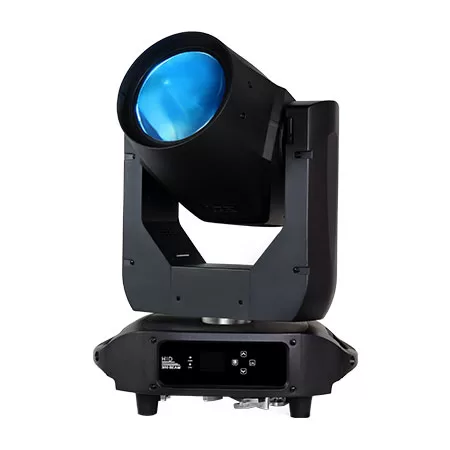
Stage Moving Head Beam Light LB380
It has a special optical design to ensure that the beam of light is full and the spot is uniform during projection. The unique streamlined appearance design makes it have a higher scanning speed and an automatic error correction function.
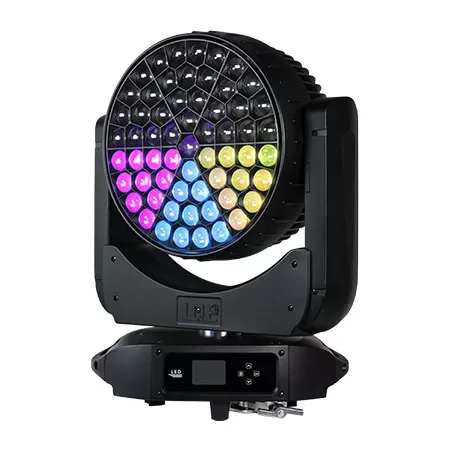
1000w 61x40w RGBW Stage Moving Head Wash Light LW1000
1000W 61x40W LED RGBW Mulichips Moving Head Wash Lights with Zoom (5°–50°), Covering Large Range and Long Distance. Designed to deliver a 5°–50° ultra-large zoom range to achieve a greater wash effect, illuminating stages and events with stunning lighting effects.

600w 19x40w RGBW Stage Moving Head Wash Light LW600 Zoom IP20
600W 19x40W LED RGBW Mulichips Moving Head Wash Lights with Zoom (5°–50°), Covering Large Range and Long Distance. IP20: Designed to deliver a 5°–50° ultra-large zoom range to achieve a greater wash effect, illuminating stages and events with stunning ring control lighting effects.

LED Moving Head Stage Wash Light LW200Z
The versatile moving head stage light provides a powerful lighting solution for theaters, concerts, and large outdoor performances. Suitable for theaters, TV stations, entertainment stages, and large outdoor performance scenes.

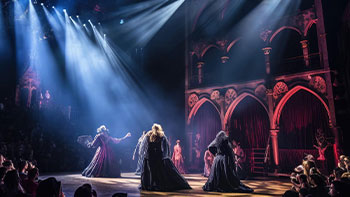
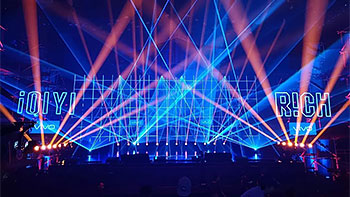

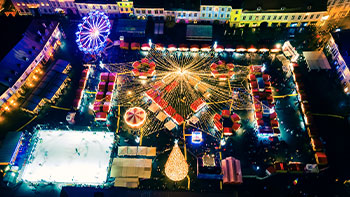








Linkedin
YouTube
Whatsapp: +8618924548390
TikTok